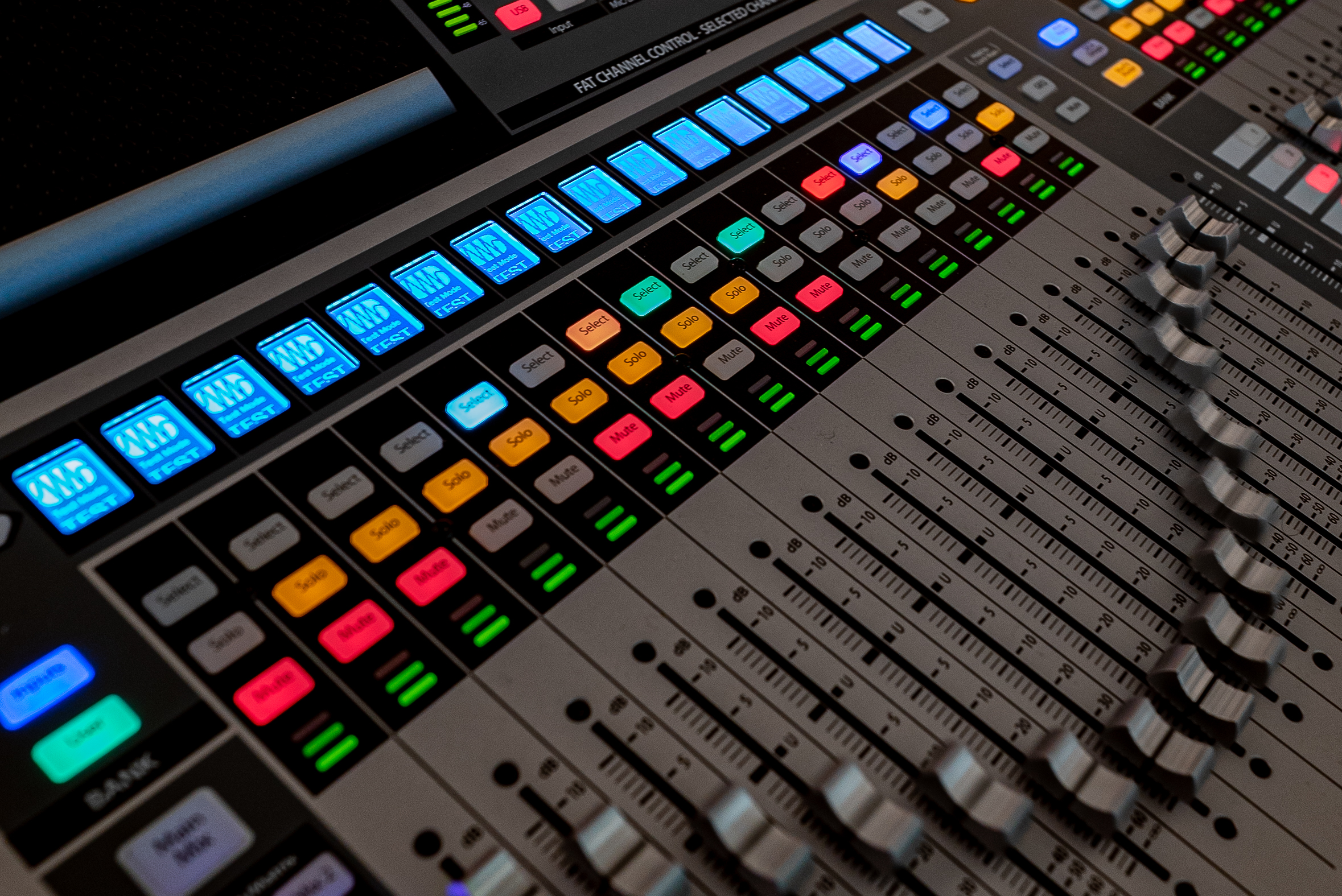For any voice performer, from a lead vocalist to an inspirational speaker, there are tremendous benefits to having a wireless microphone system that allows freedom of motion on stage without any of the restrictions imposed by cables. And for certain stage productions where a number of performers are expected to wear a microphone, a wireless mic system isn’t some exorbitant luxury — it’s a basic necessity.
But with volumes of catalogs listing endless assortments of wireless microphones, the Federal Communications Commission (FCC) outlawing certain operating frequencies and differences in hardware such as bodypack versus built-in transmitters, the decision to purchase a wireless microphone system can understandably be a daunting one.
This is why we’ve put together the following points for you to consider when choosing a wireless microphone:
- Frequency: Let’s start off with the bad news from the FCC. If you’re using 600 to 700Mhz wireless mics, they need to be replaced. The 700Mhz models are already illegal, and by 2020 those that operate between 566 and 698Mhz will be illegal too. The good news is that for strong transmissions across distances, the UHF frequencies between 470 and 548Mhz are perfectly fine and not in any foreseeable danger of being outlawed. Other systems use a 2.4GHz band, but since this is the same frequency Wi-Fi operates on, it’s prone to interference. Others use the 902 to 928Mhz range, which works well. And for up and coming digital systems, the VHF range of 169 through 216Mhz is being put to good use.
- Sound quality: When it comes to sound, the question remains whether your budget can afford a digital system over an analog one. For sound quality, the answer is simple. Since analog systems make use of companders — a system by which the sound signal is compressed and then expanded, hence its name — the end result can suffer. In contrast, digital systems not only average longer battery life, but they also transmit a fuller and much more dynamic sound.
- Reliability: As noted above, if you’re looking for solid noise reduction but the wireless microphone you’re using has an inexpensive compander mechanism that results in an output resembling a pumping sound, neither you nor your audience are going to be satisfied. Look for systems that have noise, static and dropout reduction, as well as robust compatibility, that fit your price range. A word to the wise: If you cut too many corners with a low-budget microphone, you run the risk of getting what you paid for!
- Operating range: To eliminate interference and dropouts, you’re advised to look for a wireless mic that’s rated for approximately twice the distance you think you’ll need. In that way, you’ll be using the microphone well within its strongest operating range. Also, consider purchasing a wireless distribution system if you are looking for better wireless coverage or if you are using multiple microphones in a space.
- Features: If you’re looking for a wireless microphone for a lead singer or for single-speaker stage situations, you can benefit from a system with a built-in transmitter that’s built much like a wired handheld mic. On the other hand, if you’re looking for wireless microphones for singers who dance or play an instrument like drums, then you’d do better to choose a microphone with a wearable headset and bodypack transmitter. In addition, features like rechargeable batteries, twin antennas and separate mute switches might also be worth considering.
Illuminated Integration for Outstanding Audio Performance
For answers to all your questions about how to choose a microphone, why not contact the team at Illuminated Integration? Our contact form is easy to use, and we’re always happy to hear from you!
